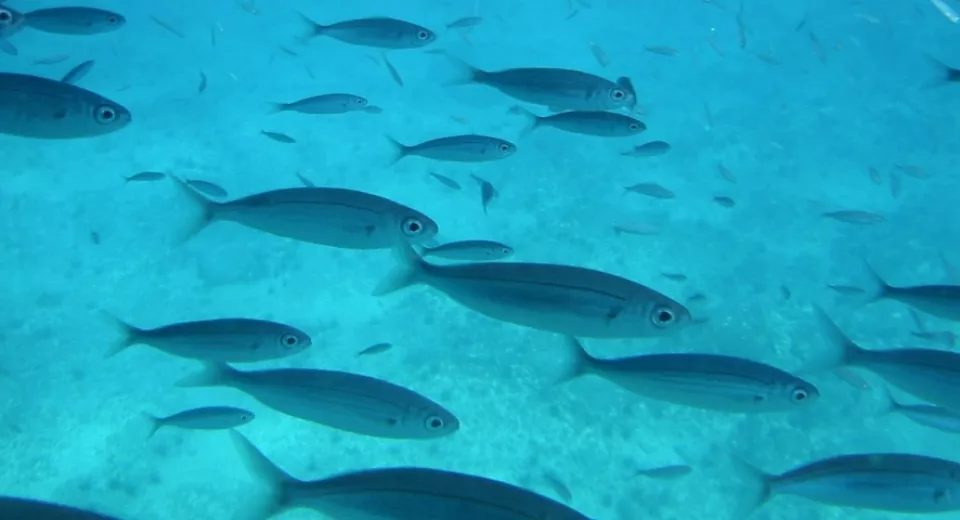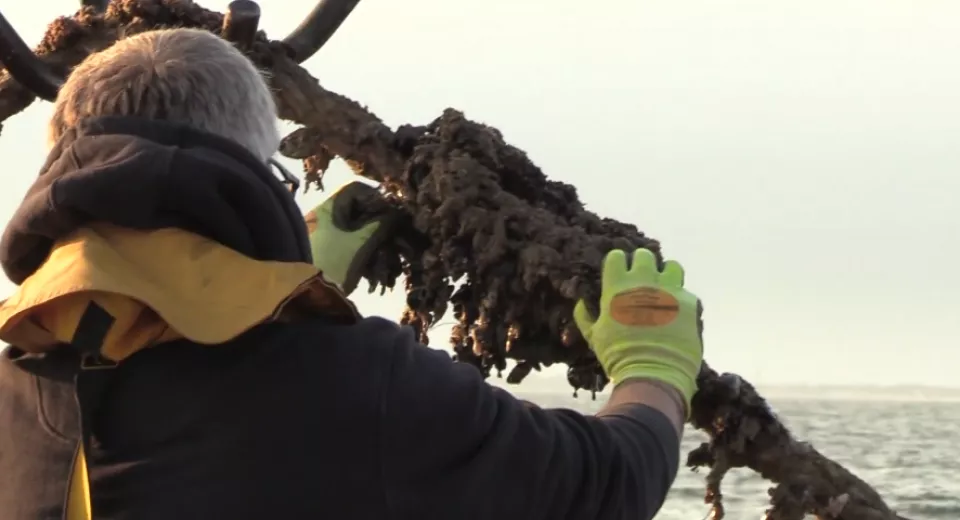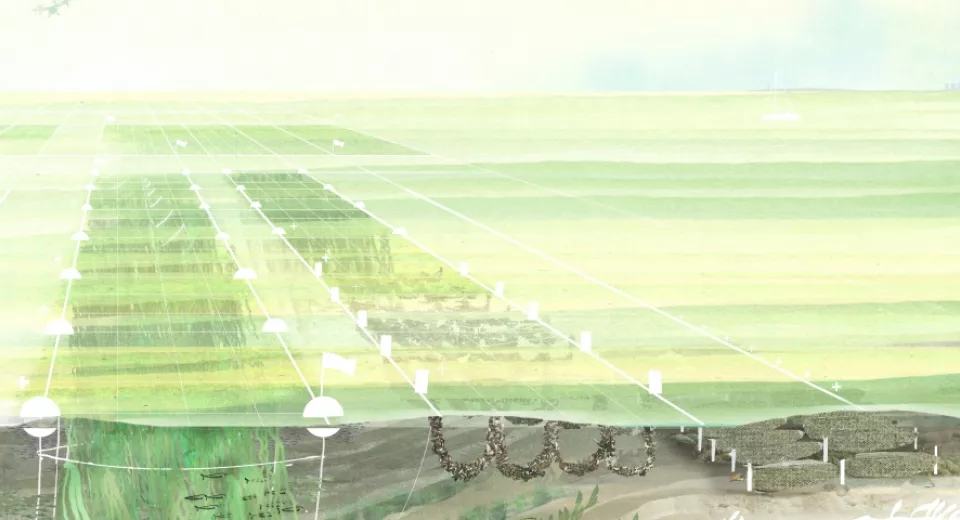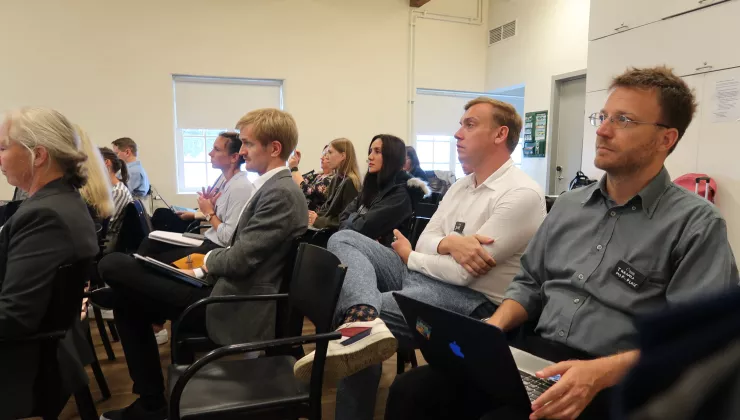What does the future of marine aquaculture look like?
Aquaculture has a lot of potential, but is not the holy grail. The sector still faces many challenges related to the environment, for instance. When farming fish at sea, there are, for example, many issues in terms of pollution and diseases. As a result, production is already shifting to onshore areas or being organised even further offshore.
Technological innovation will be necessary to develop marine aquaculture in a sustainable way. To grow the sector, we must know which type and scale of infrastructure is needed, which in turn depends on the market demand, geographical trends, legislation and policy. These are all elements that are difficult to predict.
In the recent ‘Marine Aquaculture Forecast’ report, DNV, an accredited registration and classification agency headquartered in Norway, estimated the demand for seafood in 2050 and considered the way we will meet this demand. The main findings of the report are summarised below.

Market demand
In 2018, marine aquaculture (molluscs, crustaceans and fish) produced 30 million tonnes of seafood per year. DNV predicts this will further increase to 74 million tonnes and thus match the fishery volumes. Wild fisheries will still provide 65% of the total food supply from the seas, but the share of sea-farmed animals will increase from 20% to 35%.
The biggest growth is expected in finfish farming (from 7 to 21 Mt per year) and in crustaceans (from 5 to 19 Mt per year). Mollusc farming is expected to reach a limit of 34 MT per year in 2040.
On top of that, DNV predicts a gradual growth in seaweed farming, which will increase in that same period from 30 to 50 million tonnes per year. Seaweed will mainly respond to the growing demand for non-food products (from 4% to 20%).
Farming systems
In the future, marine aquaculture will focus more on farming high-quality species (such as salmon), and less on farming new species. This is due to a shift towards more technologically advanced systems using digitisation, genomics, automation, etc.
In addition, DNV notes that farming in bays will shift towards more offshore or onshore farming. Offshore offers, for example, more space, cleaner water and less burden of disease, but there is also a need for more complex farming systems that are able to withstand the rough conditions at sea.
Standardisation of systems and legislation will play an important role in reducing the investment costs. The advantage of onshore farming is the reduced distance to consumers, but it does depend on inexpensive energy.

Costs
According to DNV’s study, by 2050, the EU will annually invest approximately 2.5 billion USD in aquaculture, 25% of which will be invested in offshore aquaculture. Onshore and offshore farming of marine species is still much more expensive than wild catches. The costs must therefore be reduced by focusing on high-quality organisms and increasing farming capacities.
In addition, transport and feed costs can also be reduced. In order to meet the demand, 60 Mtonnes of feed will be needed by 2050. As feed determines 90% of the aquaculture footprint, a strong competition will arise for new, sustainable ingredients. The scalability of these ingredients and the optimisation of feeding systems are essential in that regard.
Space
China and South-East Asia will remain the leaders in the marine aquaculture sector, representing 80% of the total production. Latin-America will know a strong increase (quadrupling its production), while the production in Europe will only double.
In order to meet future needs, the surface for marine aquaculture must be tripled by 2050. In Europe, this equates to approximately 1,700 km² for offshore aquaculture. In terms of use of space, molluscs and crustaceans are less efficient, with yields of 500 and 400 tonnes/km² respectively, compared to 850 tonnes for fish.
Integrated Multi-Trophic Aquaculture (IMTA) is a first step towards a more efficient use of space. The next step is integration in offshore wind farms and multi-use platforms. The impact on biodiversity remains a very important focal point in this regard.

Climate
Climate change will have a significant impact on marine aquaculture yields. As marine organisms are sensitive to acidification and warming, they will experience more stress, causing slower growth, more mortality and lower yields.
The impact will depend on the organisms’ robustness. Mechanisms such as selective breeding, functional feeds and genomics can make organisms more robust. Digitisation will also play an important role: sensors and smart measuring systems can be deployed to detect diseases and monitor growth.
Sustainability
Making marine aquaculture more sustainable is a complex process. Not only technology and innovation will play a crucial role, but also cooperation between stakeholders and the industry will be indispensable. Sustainable production depends on transparency and traceability throughout the value chain, including the feed, to avoid negative ecological and social consequences.
Policy instruments will be crucial to promote transparency, sustainability and traceability of aquaculture. However, this is no easy process because of the great diversity in aquaculture systems. There is, therefore, a need for robust science-based frameworks.


